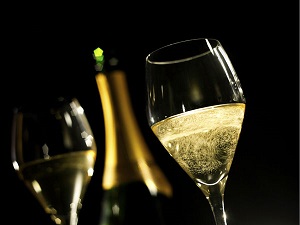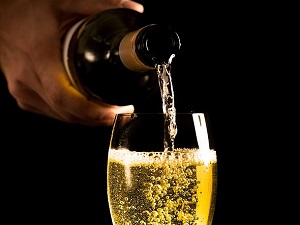
What is a sparkling wine?
A sparkling wine is the opposite from a still wine. You can see little bubbles that rise to the surface. These bubbles are caused by carbon dioxide which is released when the bottle is opened.
The styles of the different sparkling wines can vary, but since 2008 they have been regulated at a European level. There are:
- “Vins perlants” are the least bubbly. The wine is said to be “perlant” when it has more than 1 gramme of CO² per litre of wine. The bubbles are sometimes almost invisible. Examples are a Gaillac wine or some Savoie wines.
- “Vins pétillants” contain between 2 and 4 grammes of CO² per litre. For example a Cerdon or Vouvray.
- “Vins Mousseux” have more than 4.5 grammes of CO² per litre. Champagnes and Crémants fall into this category.
The amount of fizz is therefore what counts in this classification system. For the mousseux sparkling wines, there is then a sub-classification level, defining the wines as “Brut nature”, “Brut”, “Extra Brut”, “Extra Sec”, “Sec”, “Demi-Sec” or “Doux”, which describes the amount of sugar added by the “liqueur d’expédition”. The liqueur is a mix of wine and sugar which is added when using certain vinification methods to replace the wine lost during the “dégorgement” or disgorging, as we’ll explain a little later on.

But where do the bubbles come from?
When we open a bottle, we can see bubbles for two reasons.
Physics first. Before opening the bottle, the CO² gas is dissolved in the wine, and we can’t see the bubbles. When we open the bottle the pressure inside dramatically falls to equal the ambient atmospheric pressure. That is why the cork can also fly out. And when the pressure falls, the volume of the gas increases, the molecules reform into gas and rise to the surface of the wine.
And secondly, we can see the bubble of gas form and rise because of the tiny bumps present on the inside of the bottle and in our glasses. If we opened the same bottle in laboratory conditions with zero impurities in the containers, the gas would escape into the air without forming any bubbles.

How do you make different types of sparkling wines?
There has to be some gas initially in the bottle to get some fizz. And in order to attain this, there are different vinification methods used.
The most famous is the “méthode champenoise”, also known as the “méthode traditionnelle” or traditional method, when not used for making champagne. Since 1994, the term “méthode champenoise” is regulated and can only be used for wines from the Champagne region. The vinification process is the same as for a still wine, and the wine is then bottled as usual. Part of the wine is kept to one side to be used later to make the liqueur d’expédition. Some of this wine is then added along with some sugar and yeast into each bottle. The wine then starts to ferment again, this time directly in the bottle, and the gas that is produced during fermentation is trapped inside. Once all of the sugar has been used by the yeast, the fermentation stops. Lees are also produced in the process, so the wine is laid down on racks for a while to let them settle. Then the bottles are placed with the neck pointing downwards and each day they are turned 1/8 to a ¼ of a turn, a process known as riddling, to try and collect all of the lees in the neck of the bottle. The lees are then removed during the disgorging whereby the neck of the bottle is frozen before opening and taking out the ice that has the lees trapped inside. The bottle is then topped up again with the liqueur d’expédition, before being sealed again with the final cork.
In the “méthode par transfert” or the transfer method, the process is the same for the fermentation period, but there isn’t any disgorging. Instead the wine is completely removed from the bottle, the lees filtered out in a vat, and the liqueur d’expédition added before being returned to the cleaned bottles.
The “méthode ancestrale” (or rurale or artisanale) is when the first fermentation takes place in the bottle. The wine is put into the bottles very quickly after the harvest so that the alcoholic fermentation occurs inside.
The “méthode de la cuve close” or Charmat method works on the same principle, but in the vat instead of inside the bottle for the fermentaion. When the wine is transferred to the bottles, a little gas is lost, but which can be replaced by adding some CO².
And then there is also the “gazéification” or soda method which doesn’t use the gas released during the fermentation period, but simply adds CO² from a carbonator to a still wine before bottling.
Whichever style of bubbly you choose, enjoy the fizz, and have fun during the end of year celebrations!
Other related articles
What wines will you drink during the end of year festivities?
Comments
No comments.




